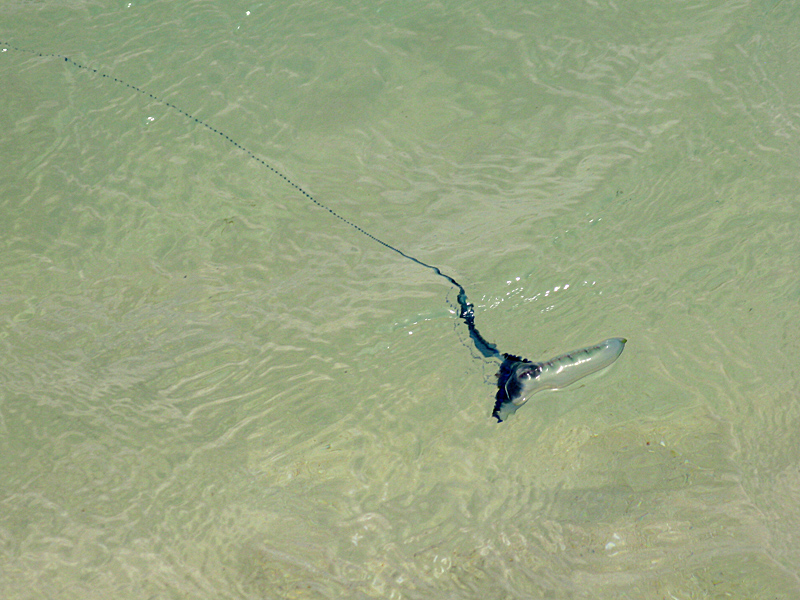�
�

©Anne: Physalia utriculus with two species of fish sheltering underneath it at Lizard Island. The long tentacle has broken after making contact with a snorkeller.
�
���
Physalia utriculus
Bluebottle

©Anne: Physalia utriculus with two species of fish sheltering underneath it at Lizard Island. The long tentacle has broken after making contact with a snorkeller.
Kingdom
Animalia
Phylum
Cnidaria
Class
Siphonophora
Order
Cystonectae
Family
Physaliidae
Genus
Physalia
Species
Physalia utriculus
Status
unspecified
Colours
Distinguishing features
A bluebottle appears to be an individual animal but it is actually a colony comprising numerous specialised individuals. The colony has a distinctive blue gas-filled float, a single main tentacle equipped with stinging cells called nematocysts, and often several much shorter tentacles. The float is typically 20 to 80 mm long and there are reports of floats as long as 150 mm in some places. At Lizard Island, most colonies are quite small with float length in the range 10 to 60 mm. The main tentacle can be several meters long and it can retract to just a few centimetres.
Size
- Averaging 8 cm (float length)
Synonyms
Local abundance
- Lizard Island, Queensland, Australia: This is the most common bluebottle in Australia. The species is absent from Lizard Island waters for most of the year but it can be abundant at times, often in Summer and associated with northwesterly winds.
Web resources
Danger
- significant discomfort - Causes immediate, painful stings on contact.
References
- Anonymous (2004). Stinging jellyfish in tropical Australia: bluebottles and Pacific Man-o-War, CRC Reef Research Centre, Current State of Knowledge.




